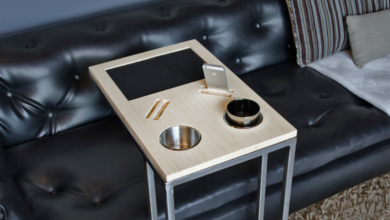Knockdown Rebuild vs Renovation: The Hidden Costs Brisbane Homeowners Don’t See Coming

Wondering whether you should do a knockdown rebuild or a renovation? You should go for a knockdown rebuild if you want to build a brand new home on your existing block. But if you want to keep your home’s character while updating it, choose a renovation.
We think a knockdown rebuild is often better because you get predictable costs, modern building standards and a home built exactly how you want it.
These two approaches are quite different and suit different types of Brisbane homeowners. So in this article, we’ll cover:
- Hidden costs that catch people off guard with both options
- When renovation makes more financial sense than rebuilding
- Real Brisbane examples with actual project figures
- How to budget properly and avoid surprises
Our team at Begbie Bentham has guided Brisbane families through both paths since 2002, so we know what works and what doesn’t.
Ready to discover which option is best for you? Let’s dig into the numbers.
Brisbane Homeowners’ Guide: Renovation vs Rebuild Decision
In general, we recommend rebuilding because you get predictable costs, modern building standards and complete control over the design and layout. However, the decision between renovating and rebuilding depends on your budget, timeline and what you want from your home. When you understand the exact costs and benefits of each option, you make smarter choices about your investment.

Here’s how these two paths compare in Brisbane’s current market:
The Appeal of Renovation: Breathing New Life into an Existing Home
Why do so many Brisbane families choose renovation over starting fresh? The answer usually comes down to keeping the character they love while avoiding the upfront costs of building from scratch. With a renovation, you just need to work with what you’ve already got and make it better, so you don’t have to spend months or even years planning a new home.
One of our clients in New Farm had a beautiful 1920s Queenslander with amazing street appeal. Instead of tearing it down, they opened up the internal walls and added a modern kitchen extension with timber flooring that matched the original boards. The result was stunning, and they saved about $200,000 compared to rebuilding.
This shows how renovation can be a cost-effective solution when your home’s bones are solid and you’re happy with the basic layout. You keep your established gardens, avoid lengthy council approvals, and often finish the project faster.
Knockdown Rebuild: A Fresh Start for Your Brisbane Block
The attraction of a knockdown rebuild is creating a new home perfectly designed for your needs. You get to design a brand-new home on your own block, so you can skip the hassle of finding a new suburb that ticks all your boxes. Plus, you avoid stamp duty costs for moving to a new place and keep the kids in the same schools.
But the best part is your budget stays predictable. If you choose a fixed-price contract for your rebuild, you know exactly where your money goes upfront. These fixed costs protect you from the nasty surprises that can blow out your renovation budget. No more discovering structural problems or outdated wiring that adds thousands to your bill.
So you get predictable money management and a home built exactly how you want it. But even with a locked-in budget, there are expenses that most Brisbane homeowners don’t see coming until they’re knee-deep in the process.
Read Also: How Canadian Fintechs Are Reshaping Consumer Banking
The Hidden Costs of a Knockdown Rebuild in Brisbane
Thinking about a knockdown rebuild? The sticker price you get from builders is just the start. In this section, we’ll cover the extra expenses that can catch many homeowners off guard, so that you can plan properly and avoid nasty financial surprises later on.

Here are the main hidden costs you need to budget for:
Demolition and Site Preparation Costs
Before any demolition can begin, you need proper approvals from the Brisbane City Council. You’ll need approval to perform minor demolition works to your home if it was constructed during or before 1946. The approval process varies depending on your property’s location and heritage status.
An additional cost comes from site challenges like sloping blocks or unexpected tree roots. Excavators charge extra when they hit large tree roots that need specialised removal. For example, on Brisbane’s hilly terrain, sloping sites require extra earthworks that can add $5,000 to $15,000, depending on the height difference and soil conditions.
The most unexpected surprise for many homeowners is asbestos removal. Asbestos is a fibrous mineral that Australian builders widely used in building materials from the 1940s to the late 1980s.
According to WorkSafe Queensland, asbestos should be removed before any demolition takes place. Sometimes, asbestos removal requires a licensed removalist and special disposal procedures, which cost around $25 to $50 per square metre.
Planning, Permits, and Other Administrative Costs
Once demolition is approved, the costs don’t stop here. You’ll be looking at another few thousand dollars for getting planning permits from the local council. The fees vary significantly and aren’t fixed. You can find current fee calculations through the Brisbane City Council’s development application fees page.
Here’s what Brisbane homeowners typically pay for development applications:
- Code-assessable development applications (standard residential projects)
- Impact assessable applications (more complex projects requiring public notification)
- Building work referral agency responses when council approval is needed
- Operational work permits for site preparation and services
Besides planning costs, you’ll need to budget for temporary accommodation while your new house is being built. You can expect the estimated monthly costs of living in Brisbane per person to be around $2,000. And temporary rental costs can range from $400 to $800 per week for a decent place, depending on your family size and location preferences.
Helpful Tip: Most construction projects take about 6 to 12 months, so plan for at least 10 months of rent when you budget for your rebuild.
We know you might feel overwhelmed looking at all these extra expenses piling up. That’s why we recommend getting a construction loan from your bank or mortgage broker. These loans typically release funds in stages as work progresses, which helps spread the financial load. At least you won’t be living with dust sheets and half-finished kitchens for months on end.
Now that we’ve covered the upfront investment needed for a knockdown rebuild, let’s explore what happens when you choose the renovation path instead. You might think you’re avoiding these costs, but renovation brings its own set of financial surprises.
Unforeseen Renovation Costs on an Existing Home
Renovating your existing home typically costs around $1,500 to $3,000 per square metre for a comprehensive renovation. But that’s just the starting point.
Most homeowners find their final bills creeping up by 20% to 40% because you never know what’s hiding behind the walls until you start pulling things apart.
Common unexpected renovation costs include:
- Structural pest damage repairs
- Complete electrical system upgrades
- Foundation and slab repairs
Suppose you discover major structural problems like rotting floor joists or failing retaining walls during your renovation. These issues become a huge additional cost that can quickly derail your entire project. Then, if you also discover termite damage or a cracked concrete slab that needs replacing, the costs rise even more, and your project becomes much trickier.
This is exactly what happened to our clients in Toowong who thought they were just updating their kitchen. When you’re looking at $50,000 to fix foundational issues in a 1960s home in the suburbs, suddenly starting fresh doesn’t seem so expensive.
And structural problems are just the beginning of your potential budget surprises. Older existing homes built before 1980 often need their plumbing and electrical wiring replaced. You may find extra costs that weren’t in your original plans. The cost per square metre can jump to $4,000 to $6,000 when you add electrical rewiring and complete plumbing overhauls.
Pro tip: Always budget an extra 30% on top of your renovation quote for unexpected discoveries.
Most renovation projects hit at least one major surprise that wasn’t visible during the planning phase. So while you might start with dreams of a simple update, you often end up doing a complete system replacement.
Making the Right Choice for Your Brisbane Home
Brisbane homeowners face tough decisions when their current house no longer meets their needs. Both knockdown rebuilds and renovations offer valid paths forward, each with distinct advantages depending on your situation and budget.
We’ve explored the hidden costs that catch families off guard, from demolition permits and asbestos removal to unexpected structural problems during renovations. Understanding these expenses upfront helps you make informed decisions about your investment.
When you’re ready to change your Brisbane property, we’ll be happy to help you choose the path that makes the most sense for your family’s future.




